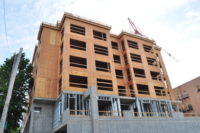Construction aspects of economic packages
Competing economic packages introduced last week by President Bush and House Democrats would have varied impacts on construction. The President's plan would make permanent tax changes. The centerpiece is a proposal to tax corporate income once, at either the firm or shareholder level. Although often described as an exclusion from individual income taxation of dividends paid by corporations, it is more nuanced. Because this change would apply to closely held as well as public companies, it might induce more firms to pay out earnings instead of retain them. Some S corporations and partnerships, which are not taxed at the corporate level, might decide to change (or revert) to corporate form, which generally is easier to use for changes in ownership interests. On the other hand, the proposed speedup (to January 1, 2003) of individual rate cuts now scheduled for 2004 and 2006 would ease taxes on S corps and partnerships. Articles from recent Internal Revenue Service Statistics of Income Bulletins (www.irs.gov/taxstats/article/0,,id=97067,00.html) show that in 1999 (the latest year available) there were 247,000 C corporations in construction, 334,000 S corporations and 128,000 partnerships (and 2,284,000 individual sole proprietorships).
The President's proposal also would increase the amount of equipment that can be expensed, or deducted immediately, by businesses making small amounts of investment. Firms that buy less than $400,000 of equipment could expense $75,000, up from $35,000 for firms that buy less than $325,000.
The Democratic package has none of the above changes but instead is focused on providing immediate, temporary stimulus and relief. It would allow equipment investments of any size to be 50% deducted in 2003, up from the 30% "bonus depreciation" enacted last year for 2001-2004. House Democrats also would allocate $5 billion additional from the Highway Trust Fund to states.
Neither package would extend a provision from last year's "stimulus" package that may be particularly beneficial to struggling construction firms. That provision, which applied only to 2001 and 2002 tax years, allowed companies with net operating losses to apply them to the previous five tax years, instead of the normal two-year carryback.
Seasonally adjusted nonfarm payroll employment fell by 101,000 for the month of December and by 181,000 (0.1%) over the year, the Bureau of Labor Statistics reported Friday. BLS Commissioner Kathleen Utgoff commented, "Construction employment was little changed in December and has held at about 6.5 million since April 2002. The industry continues to be supported by robust homebuilding activity." Industry employment stood at 6,543,000, virtually unchanged for the past several months but down 91,000 (1.4%) from a year ago.
None of BLS's three construction categories showed much change over the month. For the year, employment by general building contractors grew by 18,000 (1.2%) to 1,477,000. Employment in heavy construction, except building, fell by 45,000 (4.9%) to 879,000. Special trade contractors shed 64,000 (1.5%) of their employees, ending the year with 4,187,000. Average weekly hours of construction workers, not seasonally adjusted, slipped from 38.5 in December 2001 to 37.8 in December 2002. Average hourly earnings rose 3% from $18.69 to $19.25 and average weekly earnings were up by 1.1% to $727.65.
The chief economist of the National Assn. of Home Builders, David Seiders, today predicted record home building and sales for 2002, with a small drop in 2003: "a total of 942,000 new-home sales in 2003, a 3.4% decline from last year. Housing starts should decline about 3.5% to 1,630,00-322,000 multifamily and 1,310,000 single-family units."
Looking for a reprint of this article?
From high-res PDFs to custom plaques, order your copy today!




